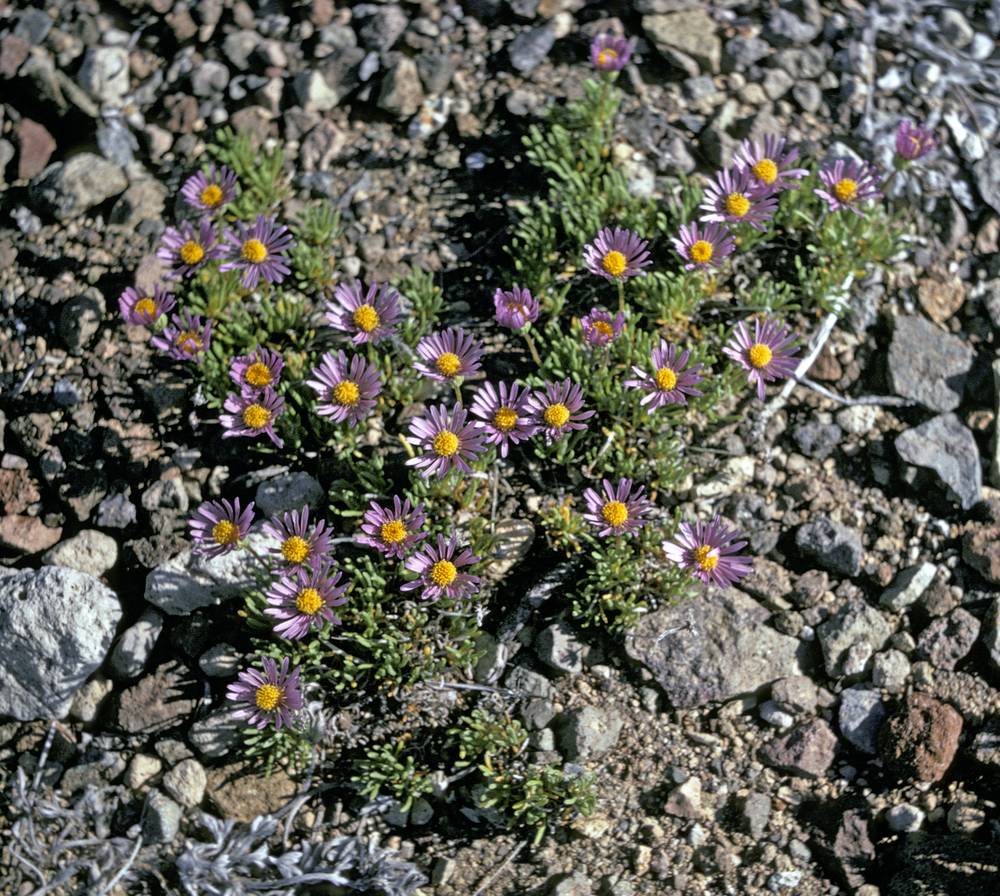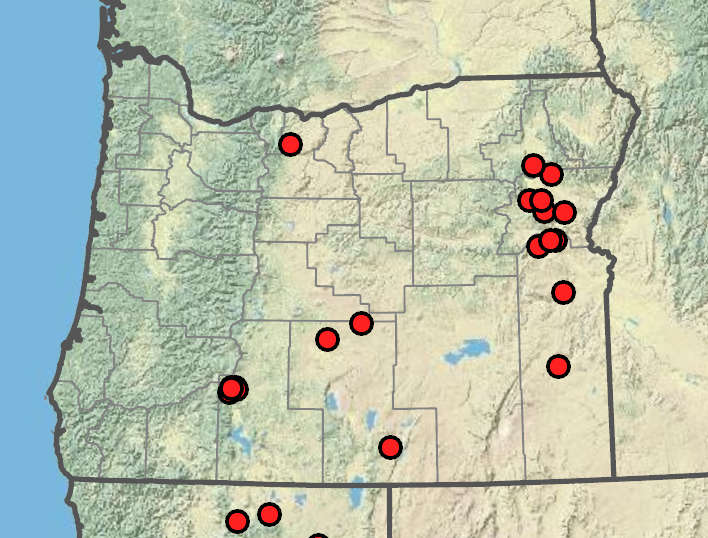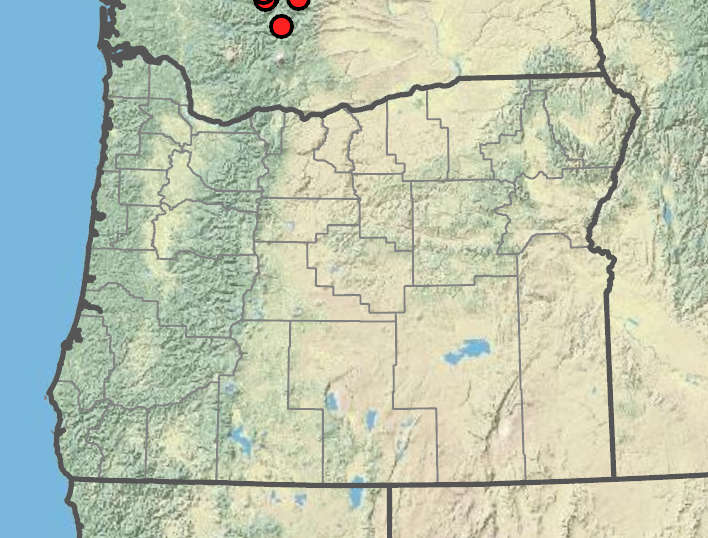Erigeron elegantulus
Erigeron aureus
dwarf blue fleabane, volcanic fleabane
golden fleabane
erect to basally ascending, sparsely to moderately strigose, eglandular.
erect; hirsute to villous, minutely glandular.
persistent, linear to filiform, 20–50 × 0.5–1 mm, white, bases sheathing;
margins entire;
tips round to acute or acuminate;
surfaces sparsely to moderately strigose.
persistent, spatulate to oblanceolate, 10–50 × 5–10 mm;
margins entire;
surfaces moderately to densely strigose, eglandular to minutely glandular.
abruptly reduced and usually restricted to basal ? of stem, bases sheathing.
5–10 × 1–5 mm abruptly reduced, often a single linear bract.
3–5 × 8–11 mm.
4–6 × 10–15 mm.
15–30, lavender to purple;
rays 3–8 × 0.7–1.3 mm.
40–60, bright yellow;
rays 4–6 × 0.5–1.5 mm.
corollas 2.5–3.5 mm.
corollas 3–4 mm.
in 3–4 unequal series;
surfaces sparsely strigose, eglandular.
in 2–3 series, often purplish colored;
surfaces moderately to densely woolly-villous, sparsely glandular.
1–2 mm, nearly glabrous to sparsely strigose;
inner pappi of numerous barbellate bristles.
2–3 mm, moderately strigose;
inner pappi of numerous barbellate bristles.
1, radiate.
1, radiate.
=27.
=18.
Erigeron elegantulus
Erigeron aureus
Rocky areas, sagebrush, coniferous forests. Flowering Jun–Aug. 700–2500 m. BR, BW, Casc, Owy. CA. Native.
Ridges, talus, rocky slopes. Flowering Jul–Aug. 1600–2600 m. BW. WA; north to British Columbia, northeast to Alberta. Native.
In Oregon, this native species is currently known only from a single collection in the Eagle Cap Wilderness, Wallowa Mountains.
James Riser, Stephen Meyers
James Riser, Stephen Meyers




